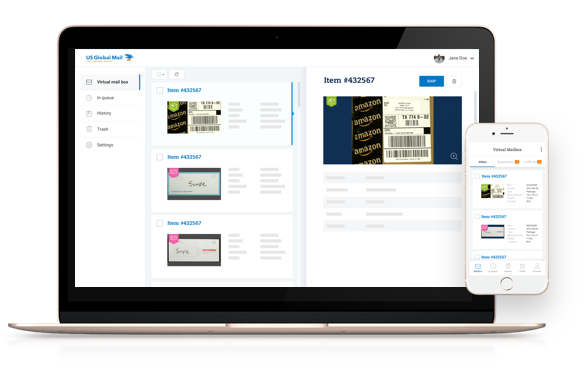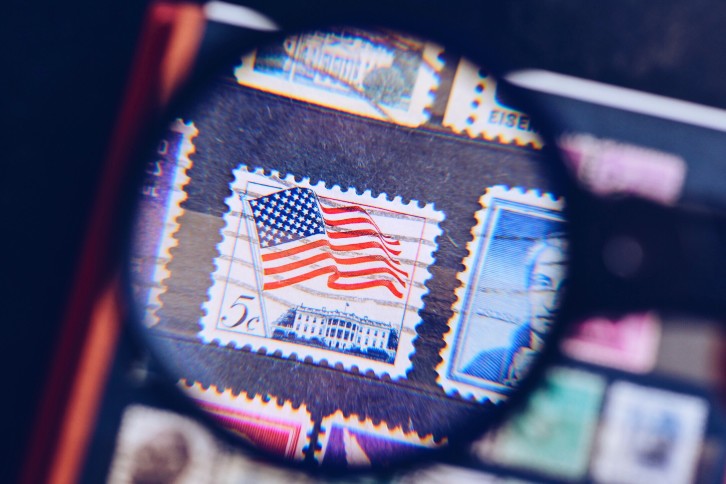The cost of stamps in the United States is always going up. This was true all the way back in 1792 when George Washington first signed the Postal Services Act into law, creating the organization that would later become the US Postal Office. Initially, though, the rates for postage were tied directly to the amount of distance that a postal carrier had to travel between sender and recipient. Around the middle of the 19th century, though (the middle 1800s, just before the Civil War) the post office decided to settle in on “one-size-fits-all” kinds of rates – and that’s pretty much the way the system has worked ever since.
Below we dig little bit deeper into what goes behind the cost of a stamp the day, the history of stamp expenses, as well as information about Forever Stamps and other postage you might have to pay to get your packages through the mail. Let’s jump right in!

Quick History of the Cost of Stamps in the US
As we highlighted above, postage has always cost “something” – dating all the way back to 20 February in 1792 when George Washington signed onto the Postal Services Act passed by Congress. The postal rate at that particular point in time was designated by the “distance zone” that each individual postal carrier rode or traveled to make sure that a package or letter got where it was going. This kind of transactional postage agreement worked from the late 1700s all the way until the 1840s.
In 1847 things changed a little bit with postage stamps adopted for mail that was either coming from or headed to the West Coast along the Pacific Ocean. In 1847 Congress made further changes to introduce new postal rates for mail that was sent anywhere out west – rates that were double and sometimes triple what they would have been back east.
Later on (in the early 1900s) extra postal stamp fees were assessed for any package or parcel that was heading to Hawaii as well as Alaska. International postage was always a nightmare to calculate as well, with all kinds of different locales and municipalities charging different amounts for that kind of international correspondence. At the end of the day, everyone that wanted to send a letter had to visit a Post Office or meet up with a postal carrier to get it to their ultimate destination. This is where postage was calculated, stamps were purchased and affixed, and how everything was managed for quite a while.
In fact, it wasn’t until the Postal Reorganization Act that was passed in Congress in 1970 – transforming the Postal Office to be Postal Service – that things were really overhauled from top to bottom. This reorganization established all “airmail” as standard by 1975 – and in the 21st century, of course, prices were segmented according to the kind of sorting technology use to separate different envelopes, packages, and parcels.
Today, we have a whole host of postage options available to take advantage of when we want to send something through the mail. Our postage is determined based on those extra services we are leveraging (if we are taking advantage of any of them at all), something we dig a little bit deeper into in just a moment.
Overview of Stamp Rates Throughout the Years
Now that we have highlighted a little bit of the early history of stamps and postage in the United States, it’s a good idea to go over the cost of stamps you would have been expected to pay when it came time to send a letter, a package, or a postcard. If you wanted to send a letter in March 1863 (during the Civil War era of the United States) you would have been expected to spend $0.06 on a stamp. That stamp would have been enough to cover our all your letters, all of your packages, and all of your postcards – though you would have had to put a second stamp (of the same price) on your packages if they weighed more than an ounce. International fees were calculated on a case-by-case basis for the most part, with the overwhelming majority of everyday Americans not really having a reason to send packages, parcels, or mail to other nations.
In July 1885, though, it would have only cost $0.02 to buy a stamp for any letter, package, or postcard that you wanted to send – and the same price to send every extra ounce of weight beyond the first one in packages, too. This pricing structure stuck around for almost 40 years, as it wasn’t until World War I that prices bumped up by a single penny across the board. The only exception to that single penny price increase during the “War Years” work for postcards which remained at the $0.02 price point.
By 1919, however, Congress decided that they would roll prices back even further – dropping all of the prices by a penny in July of that year. Stamps would never see their prices roll back in the United States ever again.
By August 1958 the price of stamps had doubled ($0.04 per stamp), and by May 1971 stamp prices had doubled again.
1975 saw the end of “surface mail” rates completely, with the airmail being adopted as the standard way for mail to make it throughout the country from that moment on. 1975 saw two increases to stamp postage, the first one introduced in September to bump stamp prices up to a time with another stamp price increase occurring in December of that year to add three more pennies to the total – bringing it up to $0.13 for a single stamp. Never before had stamps increased twice in a single year.
Stamp prices continued to jump up from there, with increases in 1981, 1985, and 1991 nearly doubling the price of a stamp in that relatively short block of time. From here, stamp prices really to take off. 1995 saws can prices jump up by $0.03 all the way up to $0.32, a number that would jump all the way up to $0.40 by the time 2007 rolled around.
Price increases in 2008, 2009, 2011, and 2012 saw that price climbed to $0.45 per stamp, and further increases in 2013, 2014, 2016, and 2018 brought the price of stamps all the way up to $0.50 per stamp. The last pricing increase on record occurred in July 10 of 2022, increasing the price of stamps up to $0.60 per stamp.

What is the Cost of a Stamp Today?
As we just highlighted a moment ago, the cost of a stamp today (in late 2022) is sitting at $0.60. These kinds of changes have historically happened in March, June, July, and August or September. This means there’s likely going to be at least a little bit of time to stock up on postage if you need it now – though it’s best to get your hands on Forever Stamps no matter what.
Forever Stamps are ALWAYS valued at the current going rate for a single stamp no matter when they were purchased previously. That means that a $0.60 Forever Stamp today is going to be able to be used as standard postage 10, 20, 50 years in the future – even if the price of stamps doubles, triples, or quadruples over that block of time. Forever stamps are always the smarter move to go with.
Other Mail Prices You’ll Want to Know About
Obviously, not everything you are going to want to send through the mail is going to be able to be sent with just a single $0.60 stamp attached to it. Some things (like packages, parcels, and international letters) are all going to have unique postage numbers that have to be calculated on a case-by-case basis.
As late as January 9, 2022 the post office charged $4.50 – $5.00 for any package that weighed up to 4 ounces (depending on the Zone.) There haven’t been any changes whatsoever to this baseline number, with each individual ounce after that costing customers between $0.50 and $2.65 (depending on the Zone.)
The USPS hasn’t made any announcements whatsoever about whether or not they are going to increase these fees in 2023 or beyond. The odds are almost certain that they will increase these prices at some point in the future, but that may or may not happen at all in 2023.
Postcard postage has increased a bit in the last year, with the last pricing increase happening in 2022. This bumped the price of postcard stamps up to $0.40 from the previous $0.35, a postcard price that had been locked in, in 2021.
When you look at how stamp prices have increased dramatically it’s almost hard to imagine that postcards have, for the most part, maintain a similar price point throughout. Though these two haven’t had the same postage rate since 1885 (when all mail cost two cents to send anywhere across the country), the rate of traditional first-class stamp postage has climbed exponentially compared to postcard postage that has really taken the slow road to the top.
If you’re looking to send a letter to someone in the United States and don’t want to spend a lot on postage you really can’t go wrong with a postcard. Sure, you don’t get quite as many benefits – or the privacy – that a traditional letter brings to the table with a postcard, but you pay almost 50% less to send it through the mail.
At the end of the day, it’s always a good idea to speak to someone from your local post office to get a handle on just how much stamps are going to cost to send something through the mail for you. They won’t only be able to let you know what the price of stamps are right then and there in that particular moment, but they are also going to be able to let you know how many stamps you need to buy to send your package, parcel, or envelopes through the mail as well. The fact that you are right there and able to drop your mail into the delivery box and have it sent away almost immediately is just another reason to spend more time at your local post office!

Simplify Life with a Virtual Mailbox from US Global Mail
Of course, not everyone is overjoyed with how USPS handles mail deliveries, how they handle PO Box agreements, or how they have fallen a little bit behind the times when it comes to using technology to better manage all of our mailboxes. Luckily, when you make the decision to switch to US Global Mail, you don’t have to worry about dealing with mailboxes that feel like they are antiquated any longer.
No, instead you’ll be guaranteed to have every piece of mail you get delivered scanned, digitized, and instantly forwarded to your email of choice. That alone let you know exactly what’s going to hit your mailbox and when, allowing you avoid trips down to the mailbox if they aren’t going to be that important.
On top of that, US Global Mail also offers digital mail scanning and forwarding services, package acceptance from all of the major shipping companies, and a physical address that you can use as your mailing address instead of a PO Box number. If you’re interested in learning more about everything US Global Mail brings to the table, check out their services and website today!





